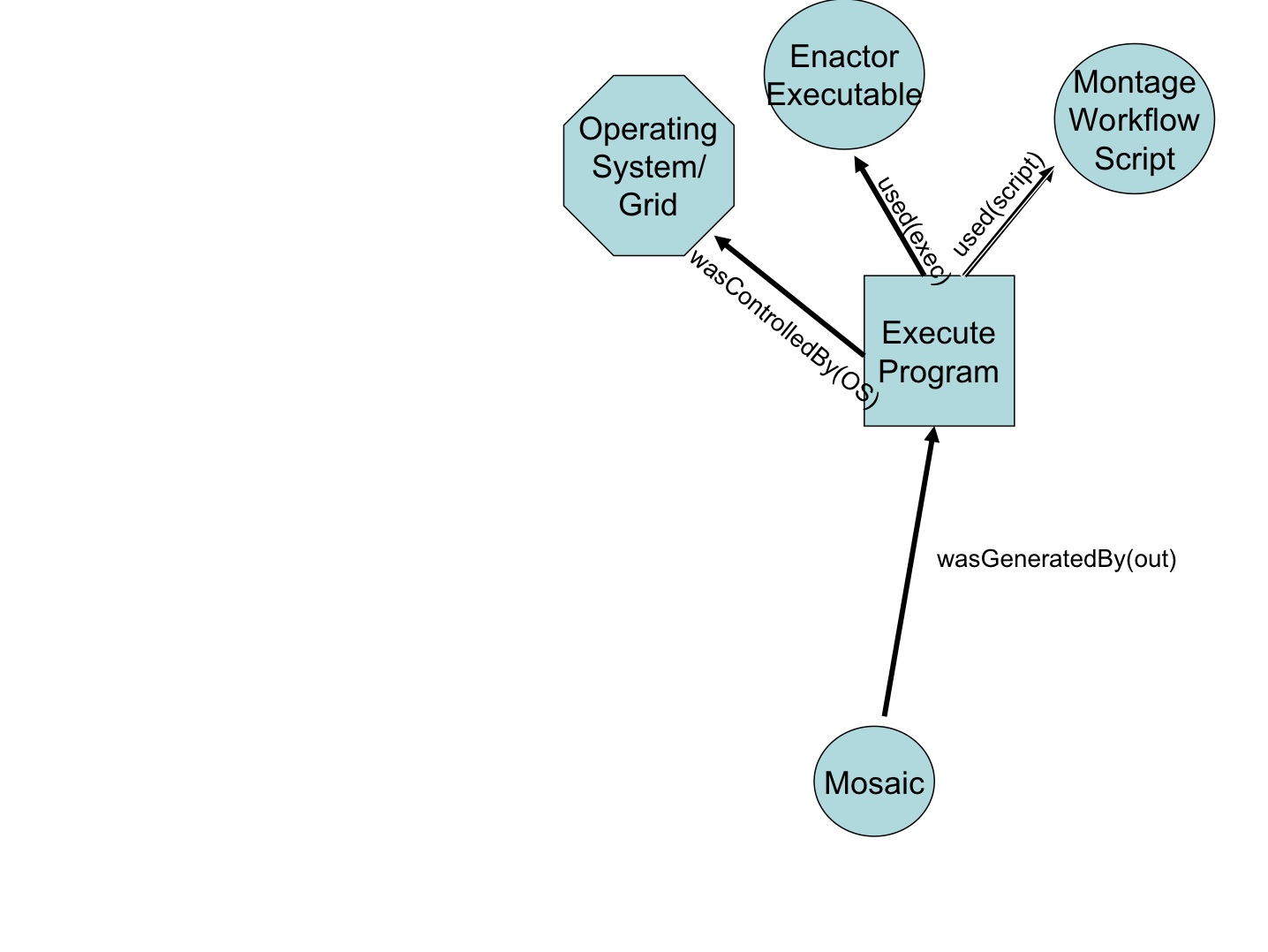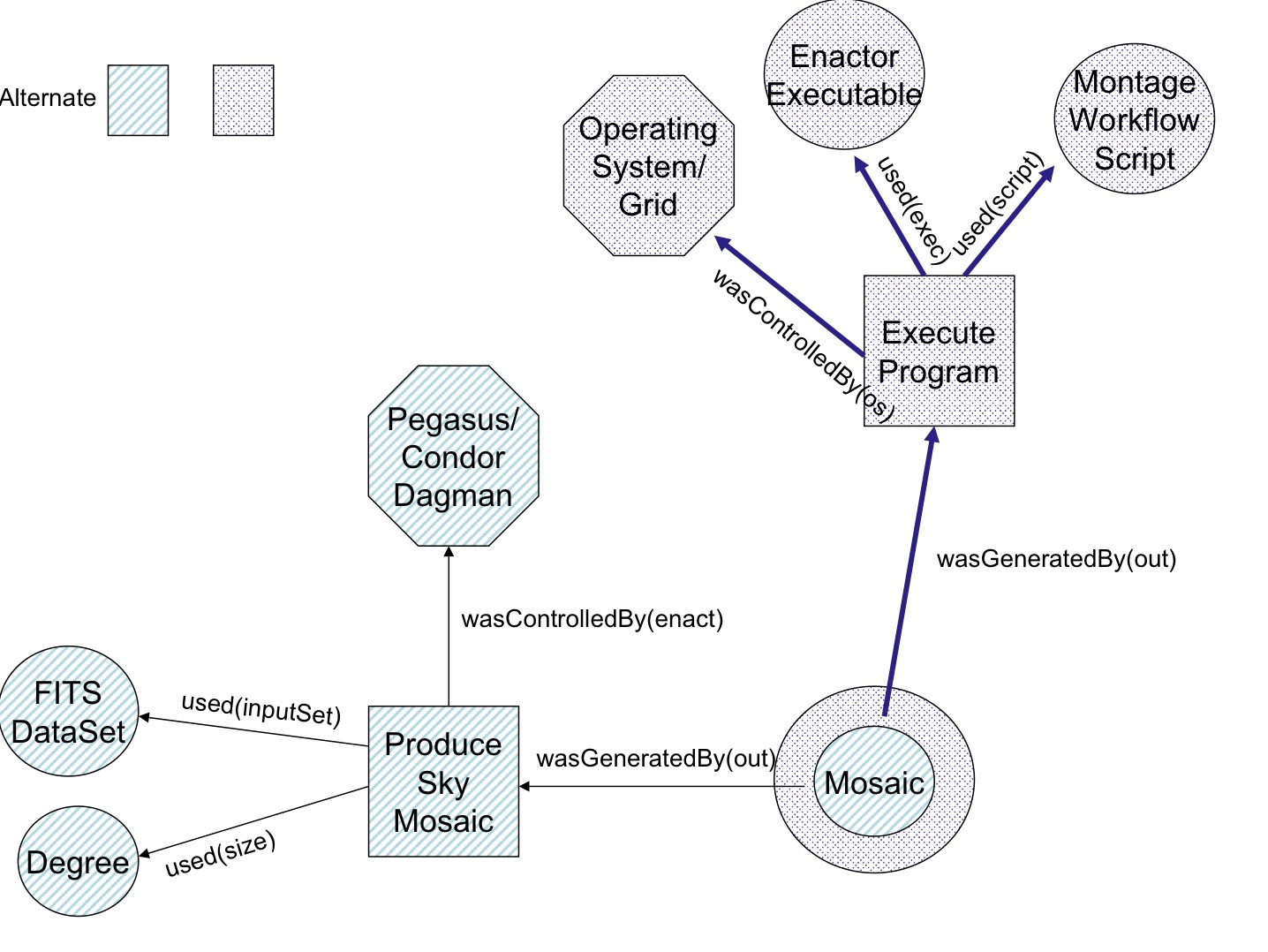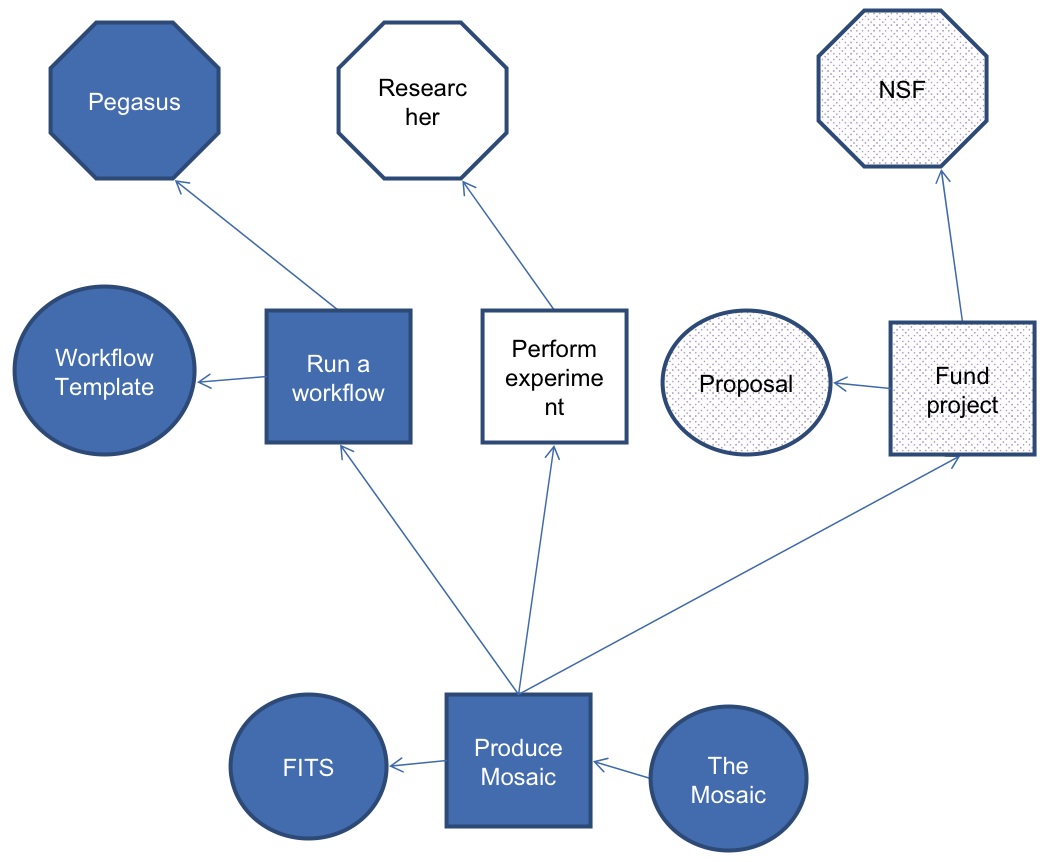Start of topic | Skip to actions
Open Provenance Model Contents
to top
- Introduction
- Basics
- Overlapping and Hierarchichal Descriptions
- Provenance Graph Definition
- Timeless Formal Model
- Inferences
- Formal Model and Time Annotations
- Time Constraints and Inferences
- Support for Collections
- Example of Representation
- Conclusion
- Best Practice on the Use of Agensts
- References
Best Practice on the Use of Agents
With the defined notion of account, we now revisit the sky mosaic example. Instead of Figure 3, a different description could encompass the steps the operating system (or the grid) goes through in order to execute a program (as in the PASS and ES3 approaches). Figure 18 illustrates some possible causal dependencies for a system-level description. Here, we see an explicit reference to the workflow script used by the enactor.

Figure 18: Overlapping Montage Provenance

Figure 19: Montage Provenance

Figure 20: Multiple Agents Controlling a Process
Comments
to top
| I | Attachment  | Action | Size | Date | Who | Comment |
|---|---|---|---|---|---|---|
| | montagePegasus.jpg | manage | 292.1 K | 30 Jul 2008 - 18:47 | PaulGroth | |
| | MultipleAgents.jpg | manage | 126.6 K | 30 Jul 2008 - 18:48 | PaulGroth | |
| | pegasusAlternate.jpg | manage | 105.2 K | 30 Jul 2008 - 18:49 | PaulGroth |